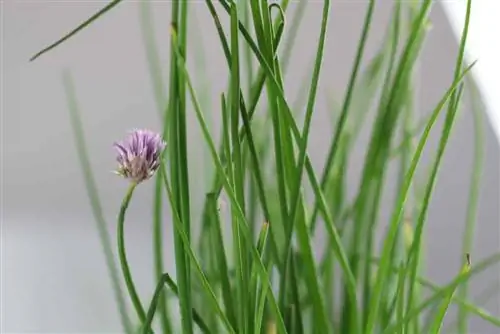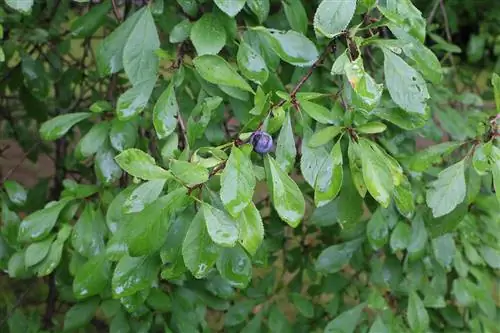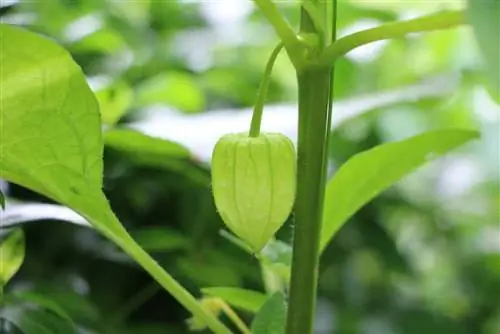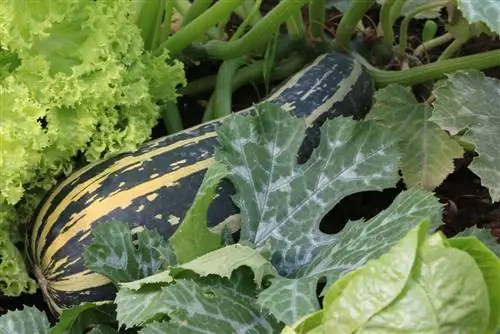- Author admin [email protected].
- Public 2023-12-17 03:39.
- Last modified 2025-01-24 12:45.
Scrambled eggs without the green chive rolls wouldn't be half as tasty, right? Along with parsley, chives (Allium schoenoprasum) are one of the most popular garden herbs. It is he althy and refines many dishes with its light onion flavor. The culinary herb thrives excellently in the home garden. If you take into account its needs, you can harvest it over several months. We show you what you need to consider.
Cultivated and wild plants
Allium schoenoprasum belongs to the amaryllis family or to the subgroup of the leek family. It is related to garlic (Allium sativum), wild garlic (Allium ursinum) and the common garden onion (Allium cepa). In some regions the names rush garlic, cuttings or grass garlic are common. In its wild form it can often be found in the wild, on the nutrient-rich soils in deciduous forests and on the edge of lakes. Wild leeks are firmer and more aromatic than common garden chives.
Known breeds
- Miro, a fast-growing variety with fine tubes and a mild aroma
- Staro, a variety with coarser tubes and a strong aroma
- Middleman, a fast growing variety with a mild aroma
- Grolau, a very aromatic Swiss variety with wide stalks
Usable plant parts
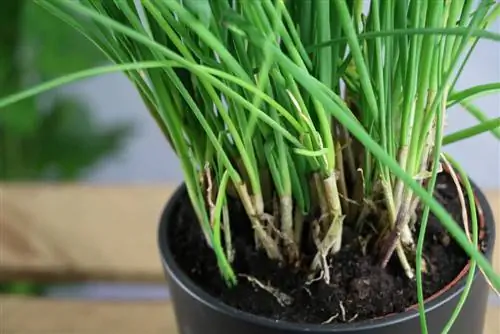
The usable part of the chives includes the approximately 20 to 30 centimeter long green stalk above the bulb. The purple chive flowers are often used for decoration only. Very few people know that they are edible and very tasty. You can refine salads and sauces with the delicate flowers. Even the chive buds can be used. Gourmets and creative hobby gardeners pickle them like capers.
By the way, there are a number of interesting types of chives.
Harvest time
The harvest time for chives begins in April, a few weeks after sowing, and does not end until October. Hardly any other plant pampers us with such a lasting yield. However, some requirements must be met so that the garden weed can continue to grow back. Use the early morning hours to harvest the leeks. At this time the plant has developed its best aroma.
Attention:
As with all pruning work in the garden, it is important to use sharp, clean tools when harvesting chives. Blunt cutting tools will crush the cuttings and injure the plant.
Flower formation and chive harvest
Many hobby gardeners stop harvesting chives when the first flowers appear. When flowers form, the chive stems become woodier and sturdier because they have to support the heavy flower. The flower-producing stems then rise from the clump and lose their aroma. The entire strength of the plant is then needed to form the seeds. The shoots before flowering are the most tender. If you continuously cut the shoots two to three centimeters above the ground, you will have something of the spicy garden herb for a very long time. The shoots keep forming again.
Prevent flowering
Many gardeners break off the chive buds to prevent flowering. This method helps to extend the chive harvest, so you always have tender shoots available. Without flowers, seeds do not form and the chives are prevented from self-seeding.
Bee Pasture
Before rigorously cutting back, please note that the chive flowers attract bees, butterflies and flower-visiting insects. Leave a few flowers and enjoy the humming and buzzing of butterflies etc. The visitors to your chive flowers are beneficial insects that contribute to good development in your garden.
Harvesting the Stems
- gather small bunches of chives and cut them 2 to 3 centimeters above the ground
- use a sharp, clean knife
- Do not pull out the chive stems, uprooting them would prevent them from growing back
Note:
Sometimes new chive shoots split a few centimeters above the ground. That's no problem. Cut the stems above the split and use as desired.
Harvest of flowers
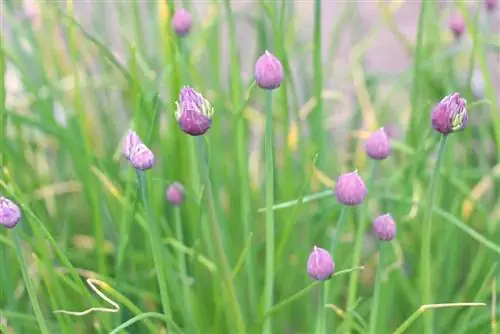
When chives begin to bloom in April, the stems become firmer, bitter and inedible. The flowers, however, are a real treat!
- Harvest chive flowers before seeds form
- Shake flowers before cutting to remove small insects
- Cut the flowers directly below the base of the flower
- only use clean, undamaged flowers
- rinse the cut flowers briefly, consume immediately or preserve
Harvesting the buds
- Cut chive buds directly below the base
- how to put capers in oil
Note:
Weed-free beds lead to a productive chive harvest.
Thinning
Combine the harvest of the chives with a simultaneous thinning of the densely growing plants. Thinning, like cutting back, stimulates new growth because the leek needs air and light for optimal development.
Preserving
The tender green leek tastes best when it has been freshly cut. Fresh chives will keep in a glass of water for a few days. The garden herb can be preserved excellently. The easiest option is to freeze the cut rolls or flowers in small portions. Drying chives is also a common preservation option. Chives flowers, buds and stems can be pickled in oil or vinegar. A good idea is to preserve it with s alt. You can easily make a tasty herbal s alt from the green rolls and the purple flowers. If you fill this into pretty jars, you'll have an unusual little gift in no time.

